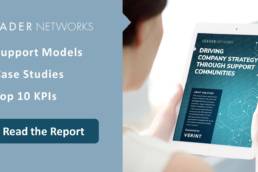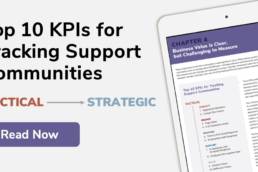
By Judith Hurwitz and Vanessa DiMauro
It is clear that the commercialization of AI has begun in earnest. But as with any complex technology, there are a lot of moving parts and a lot of complexity. AI is no exception since it incorporates big data and data management, advanced analytics, machine learning, and a variety of algorithms and models.
As AI tools and models mature, it will become the foundation for supporting business transformation and the ability of businesses to learn from massive amounts of data and help human and computer collaboration as never before. What is different? In the past we relied on business data to tell us where we have been and what we already know – with AI we can begin to learn from data in order to predict the future and correct problems before they impact the business. The bottom line is that AI is not a solitary approach for business To be successful, business leaders, IT professionals of all types must collaborate.
If implemented correctly, AI can help organizations understand data differently by removing the normal biases that often hold us back and keep us focused on conventional wisdom and baked-in beliefs. If we simply ask who are our best customers based on what they have purchased in the past we may miss significant indicators of future transitions or disruptions in customer expectations. On the other hand, if you let the data lead you to the answers you will look at your opportunities differently. The caveat is that no system – no matter how smart — can incorporate all of the nuances and knowledge that a single expert understands. However, you can’t build a data model that encompasses the entire basis of data in the world. The human brain is capable of making connections and seeing patterns in ways that an AI-based neural network cannot possibly achieve.
Enter the paradox of augmented intelligence
While we are enthralled with the potential of AI, we fear the loss of human intervention and interaction. Therefore, it is not surprising that online communities are thriving like they never have before. From support communities to professional communities, AI tools are able to bring together knowledge in ways that span geographical boundaries, space and time. So the question becomes, how can AI + human collaboration offer a powerful solution to advance know-how.
The world of online communities is in a state of transition with the advent of machine learning tools. For example, online community leaders are fearful that that chatbots will take their jobs and reduce us to discourse with the machine. But this fear is missing a core factor in community: a community depends on nuance, sensitivity and context. People need to interact at a level of complexity that cannot be replicated in a machine. Human to human interaction – supported by tools that make information more easily accessible and understandable is the key to success. Therefore, looking to the future, we see a world where our decisions and information sources are fueled by a perfect hybrid of AI and human centric collaboration.
Imagine this world where our community interactions are fueled by AI and humans together. The better the community gets at fulfilling the needs of the members, the more valuable the community becomes to the members. For community to thrive, there needs to be likeminded people, interesting dialogue, learning opportunities and information that matters to me.
So, where does AI and machine learning provide the type of assistance needed to make communities blossom? We think that there are four factors that are paramount to successful collaboration between humans and machines.
Large communities are often unable to find the right answers to questions and concerns. There is simply too much data in too many places. One of the great benefits of AI and machine learning models is that they enable data to be ingested and analyzed in ways that are not possible for the human. Therefore, these tools can enrich the depth of collaboration and insight for an online community.
How do you find like-minded people that want to collaborate? It is not always easy. What are the communities that match your interests? Which communities have the depth of knowledge you are looking for? Using machine learning based pattern matching models that learn from those who are engaged will help get people connected to the right communities much more efficiently.
You can’t always anticipate the content and information gaps within a community. Perhaps there is an emerging trend is being hotly debated in the forums. A good model can detect that there is missing data and ingest new information into the forum that will increase its usefulness to members. A community is only as good as its ability to support the needs of its members. Without active community facilitation and engagement a community dies. Models need to be fed with information from a community in order to remain relevant to members.
The bottom line is that collaboration between humans and machines can make our communities much more vibrant and relevant. Imagine world where the machine learning is able to recommend matches, lead the community to the right discussion and surface the relevant people who may have answers to your questions. The job of a community member will be to reach out and make that essential human contact, post a message or place a call.
The results can be significant and long lasting. You find the right answers to the questions you have, you communicate with like-minded people to gain insights you never even imagined. Word spreads as you bring you colleagues from across the globe to collaborate and join. You add more data and insights. The result is that the community is more powerful and helpful than the single individual sitting alone trying to solve problems. As the community meets your needs and you contribute your thoughts, everyone wins.
Originally published on https://aitrends.com
Vanessa DiMauro
Internationally recognized independent thought leader on social business strategy and operations with a specialty in online community. I help organizations drive top line growth through innovative digital strategy design and thoughtful execution. I have successfully led 60+ strategic social business initiatives for the world's most influential organizations over my 20 years as a social business executive and serve on a number of boards. My award-winning track-record is fueled by passion, experience and research.
My work has been covered by leading publications such as the New York Times, the Wall Street Journal and CIO Magazine and was recently named a Social Marketing Master by Forbes. As a former Executive in Residence at Babson College, Olin School of Management, I am an engaging and informational educator and keynote speaker.


